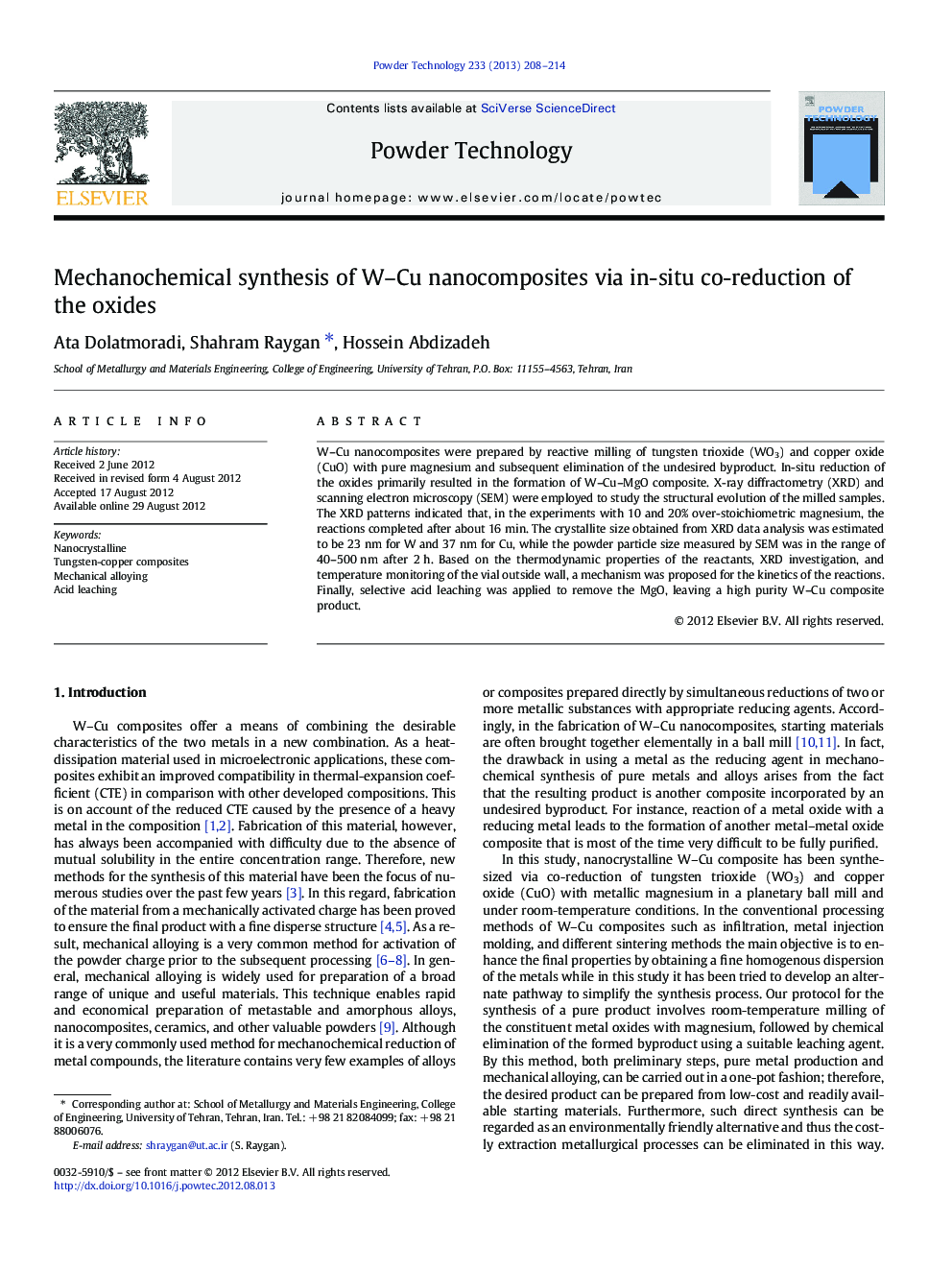| Article ID | Journal | Published Year | Pages | File Type |
|---|---|---|---|---|
| 236932 | Powder Technology | 2013 | 7 Pages |
W–Cu nanocomposites were prepared by reactive milling of tungsten trioxide (WO3) and copper oxide (CuO) with pure magnesium and subsequent elimination of the undesired byproduct. In-situ reduction of the oxides primarily resulted in the formation of W–Cu–MgO composite. X-ray diffractometry (XRD) and scanning electron microscopy (SEM) were employed to study the structural evolution of the milled samples. The XRD patterns indicated that, in the experiments with 10 and 20% over-stoichiometric magnesium, the reactions completed after about 16 min. The crystallite size obtained from XRD data analysis was estimated to be 23 nm for W and 37 nm for Cu, while the powder particle size measured by SEM was in the range of 40–500 nm after 2 h. Based on the thermodynamic properties of the reactants, XRD investigation, and temperature monitoring of the vial outside wall, a mechanism was proposed for the kinetics of the reactions. Finally, selective acid leaching was applied to remove the MgO, leaving a high purity W–Cu composite product.
Graphical abstractFigure optionsDownload full-size imageDownload as PowerPoint slideHighlights► W–Cu nanocomposite was produced using the constituent oxide compounds. ► In-situ co-reduction of the oxides was induced by MM. ► Reductions were found to be of MSR type. ► Extremely fine W and Cu crystallites less than 45 nm were formed after 20 h. ► Upon acid leaching, a high purity W–Cu powder was obtained.
